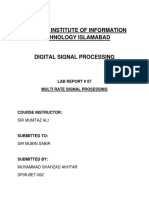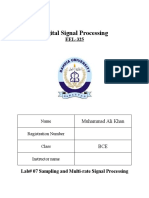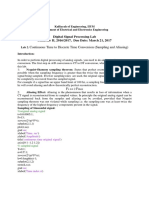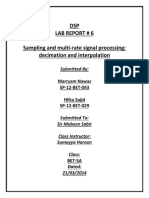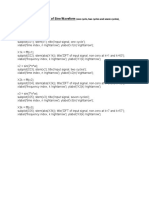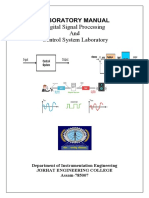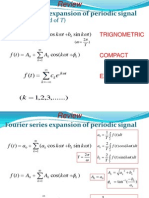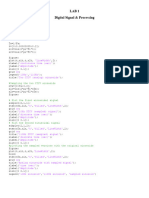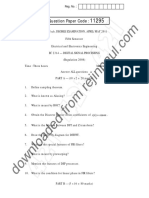0% found this document useful (0 votes)
12 views8 pagesDSP Lab Report 7
The document details Lab#7 of the EEE-324 Digital Signal Processing course, focusing on sampling and multi-rate signal processing. It covers tasks involving the generation and analysis of sinusoidal signals, demonstrating the effects of sampling rates on aliasing and signal fidelity using FFT plots. The lab emphasizes the importance of adhering to the Nyquist-Shannon sampling theorem to prevent irreversible distortion of frequency content in digital signals.
Uploaded by
Roman RomanCopyright
© © All Rights Reserved
We take content rights seriously. If you suspect this is your content, claim it here.
Available Formats
Download as PDF, TXT or read online on Scribd
0% found this document useful (0 votes)
12 views8 pagesDSP Lab Report 7
The document details Lab#7 of the EEE-324 Digital Signal Processing course, focusing on sampling and multi-rate signal processing. It covers tasks involving the generation and analysis of sinusoidal signals, demonstrating the effects of sampling rates on aliasing and signal fidelity using FFT plots. The lab emphasizes the importance of adhering to the Nyquist-Shannon sampling theorem to prevent irreversible distortion of frequency content in digital signals.
Uploaded by
Roman RomanCopyright
© © All Rights Reserved
We take content rights seriously. If you suspect this is your content, claim it here.
Available Formats
Download as PDF, TXT or read online on Scribd
/ 8



